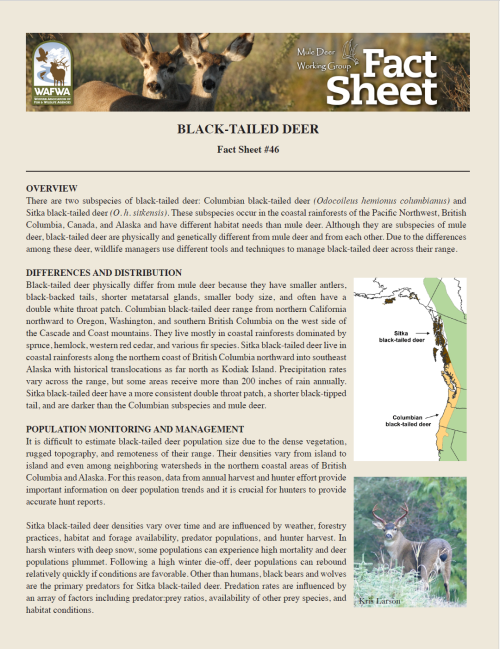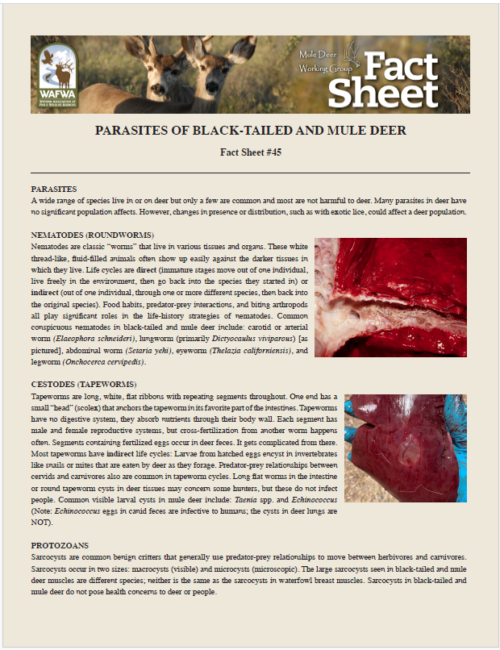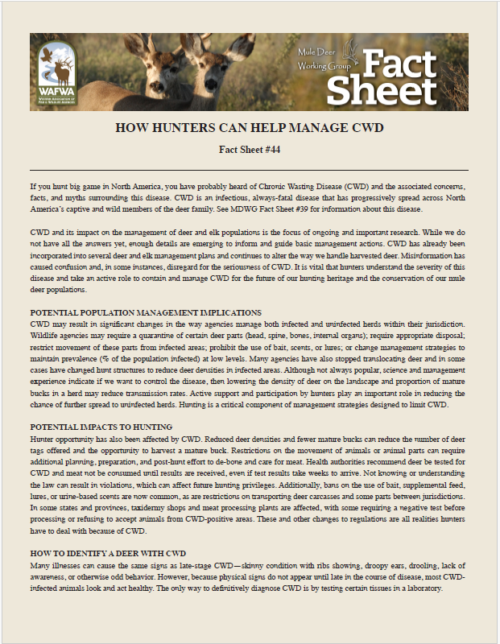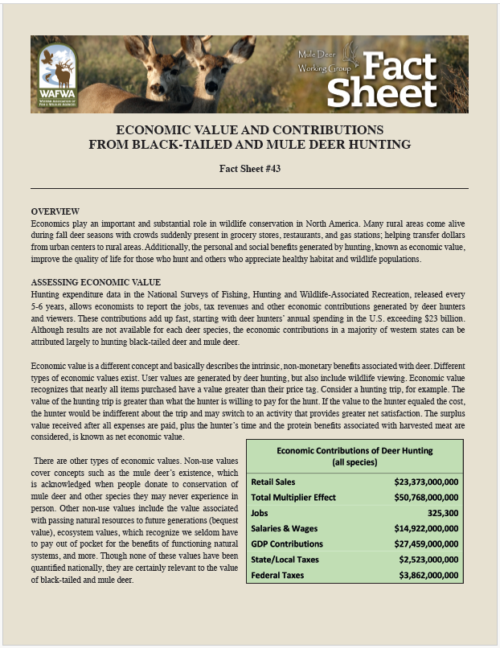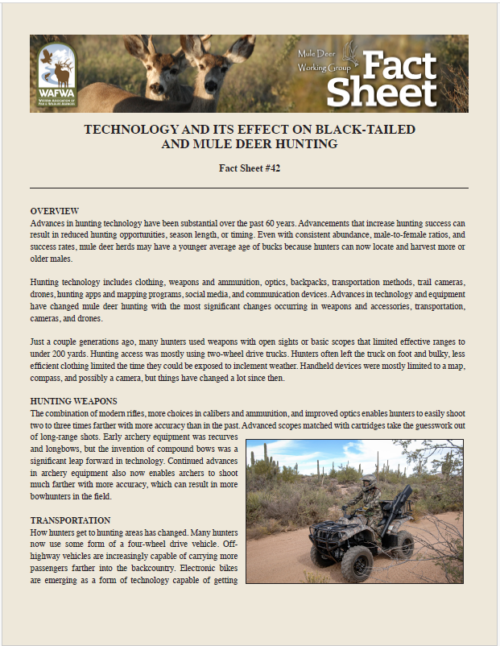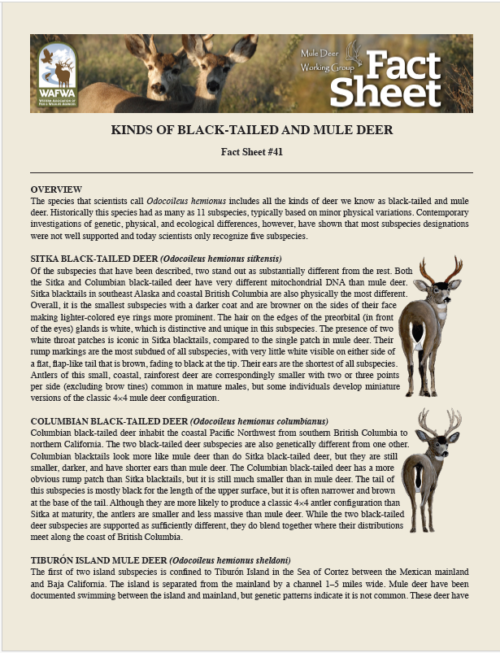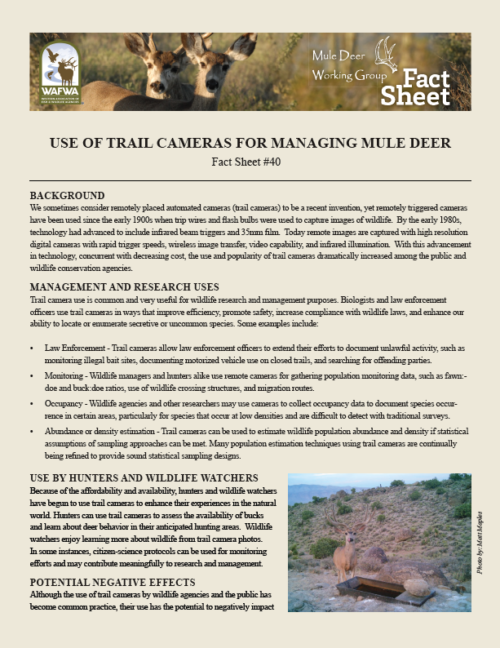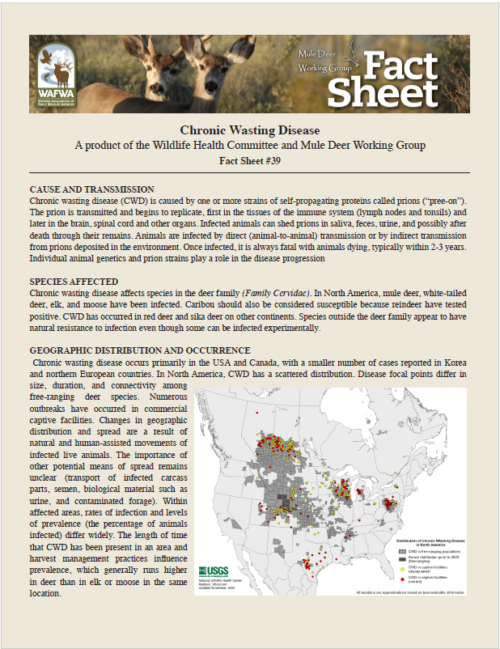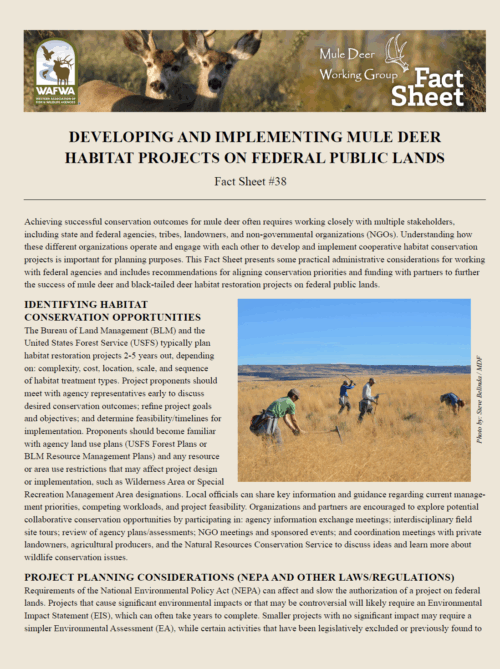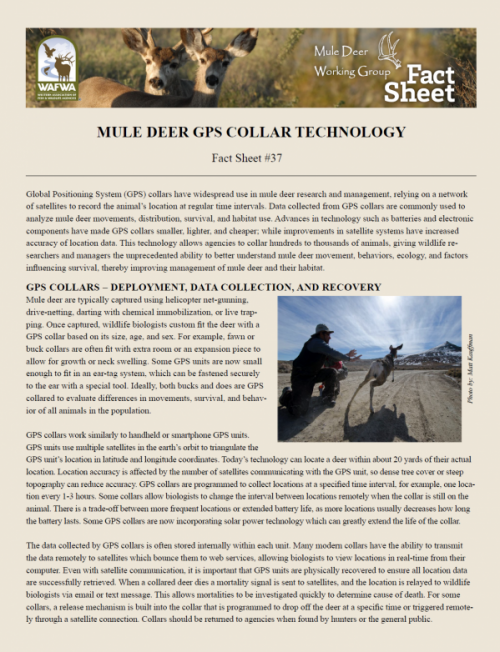Home
›
Black-tailed Deer Fact Sheet #46
Posted by WAFWA on November 17, 2025
OVERVIEW There are two subspecies of black-tailed deer: Columbian black-tailed deer (Odocoileus hemionus columbianus) and Sitka black-tailed deer (O. h. sitkensis). These subspecies occur in the coastal rainforests of the Pacific Northwest, British Columbia, Canada, and Alaska and have different habitat needs than mule deer. Although they are subspecies…
Read More
Fact Sheet 45: Parasites of Black-tailed and Mule Deer
Posted by WAFWA on January 15, 2025
A wide range of species live in or on deer but only a few are common and most are not harmful to deer. Many parasites in deer have no significant population affects. However, changes in presence or distribution, such as with exotic lice, could affect a deer population.
Read More
Fact Sheet 44: How Hunters Can Help Manage CWD
Posted by WAFWA on January 15, 2025
If you hunt big game in North America, you have probably heard of Chronic Wasting Disease (CWD) and the associated concerns, facts, and myths surrounding this disease. CWD is an infectious, always-fatal disease that has progressively spread across North America’s captive and wild members of the deer family. See MDWG…
Read More
Fact Sheet 43: Economic Value and Contributions from Black-tailed and Mule Deer Hunting
Posted by WAFWA on January 15, 2025
Economics play an important and substantial role in wildlife conservation in North America. Many rural areas come alive during fall deer seasons with crowds suddenly present in grocery stores, restaurants, and gas stations; helping transfer dollars from urban centers to rural areas. Additionally, the personal and social benefits generated by…
Read More
Fact Sheet 42: Technology and Its Effect on Black-tailed and Mule Deer Hunting
Posted by WAFWA on January 15, 2025
Advances in hunting technology have been substantial over the past 60 years. Advancements that increase hunting success can result in reduced hunting opportunities, season length, or timing. Even with consistent abundance, male-to-female ratios, and success rates, mule deer herds may have a younger average age of bucks because hunters can…
Read More
Fact Sheet 41: Kinds of Black-tailed and Mule Deer
Posted by WAFWA on January 15, 2025
The species that scientists call Odocoileus hemionus includes all the kinds of deer we know as black-tailed and mule deer. Historically this species had as many as 11 subspecies, typically based on minor physical variations. Contemporary investigations of genetic, physical, and ecological differences, however, have shown that most subspecies designations…
Read More
Fact Sheet 40: Use of Trail Cameras for Managing Mule Deer
Posted by WAFWA on January 30, 2023
We sometimes consider remotely placed automated cameras (trail cameras) to be a recent invention, yet remotely triggered cameras have been used since the early 1900s when trip wires and flash bulbs were used to capture images of wildlife. By the early 1980s, technology had advanced to include infrared beam triggers…
Read More
Fact Sheet 39: Chronic Wasting Disease
Posted by WAFWA on May 15, 2021
A product of the Mule Deer Working Group – Sponsored by the Western Association of Fish & Wildlife Agencies. Produced with support from the Mule Deer Foundation (www.muledeer.org) – Approved January 2021. Map updated January 2025.
Read More
Fact Sheet 38: Habitat Projects on Fed Public Lands
Posted by WAFWA on May 14, 2021
Achieving successful conservation outcomes for mule deer often requires working closely with multiple stakeholders, including state and federal agencies, tribes, landowners, and non-governmental organizations (NGOs). Understanding how these different organizations operate and engage with each other to develop and implement cooperative habitat conservation projects is important for planning purposes. This…
Read More
Fact Sheet 37: Mule Deer GPS Collar Technology
Posted by WAFWA on January 1, 2021
Global Positioning System (GPS) collars have widespread use in mule deer research and management, relying on a network of satellites to record the animal’s location at regular time intervals. Data collected from GPS collars are commonly used to analyze mule deer movements, distribution, survival, and habitat use. Advances in technology…
Read More
